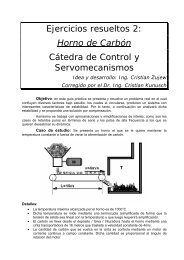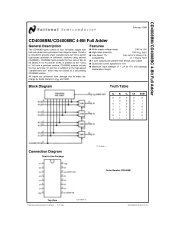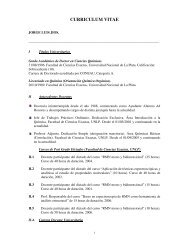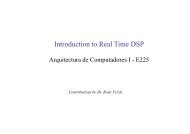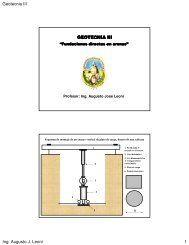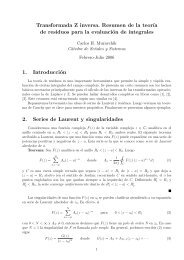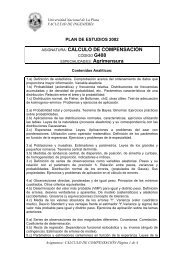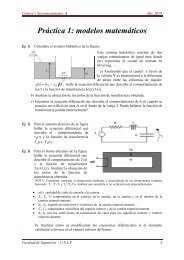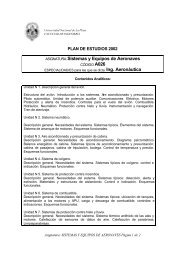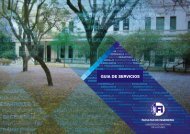ABCs of ADCs - Analog-to-Digital Converter Basics (PDF)
ABCs of ADCs - Analog-to-Digital Converter Basics (PDF)
ABCs of ADCs - Analog-to-Digital Converter Basics (PDF)
You also want an ePaper? Increase the reach of your titles
YUMPU automatically turns print PDFs into web optimized ePapers that Google loves.
Quantization Error111<strong>Digital</strong> Output1101011000110100011 LSBERROR0000 V REFV REF3V REFV REF4 3V REF2 5V REF4 7V REFV REF8 88 8Input (V)1 LSB0The Magnitude <strong>of</strong> the Error Ranges from Zero <strong>to</strong> 1 LSB7Continuing with the simple example <strong>of</strong> a 3-bit ADC, an ADC input <strong>of</strong> zero produces an output code <strong>of</strong>zero (000). As the input voltage increases <strong>to</strong>wards V REF /8, the error also increases because the inputis no longer zero, but the output code remains at zero because a range <strong>of</strong> input voltages isrepresented by a single output code. When the input reaches V REF /8, the output code changes from000 <strong>to</strong> 001, where the output exactly represents the input voltage and the error reduces <strong>to</strong> zero. Asthe input voltage increases past V REF /8, the error again increases until the input voltage reachesV REF /4, where the error again drops <strong>to</strong> zero. This process continues through the entire input rangeand the error plot is a saw <strong>to</strong>oth, as shown here.The maximum error we have here is 1 LSB. This 0 <strong>to</strong> 1 LSB range is known as the “quantizationuncertainty” because there are a range <strong>of</strong> analog input values that could have caused any given codeand we are uncertain at <strong>to</strong> exactly what the input voltage was that caused a given code. Themaximum quantization uncertainty is also known as the “quantization error”. This error results fromthe finite resolution <strong>of</strong> the ADC. That is, the ADC can only resolve the input in<strong>to</strong> 2 n discrete values.Each output code represents a range <strong>of</strong> input values. This range <strong>of</strong> values is a quanta, <strong>to</strong> which weassign the symbol q.The converter resolution, then, is 2 n . So, for an 8 Volt reference (with a unity gain fac<strong>to</strong>r), a 3-bitconverter resolves the input in<strong>to</strong> V REF /8 = 8V/8 = 1 Volt steps. Quantization error, then, is a round <strong>of</strong>ferror.But an error <strong>of</strong> 0 <strong>to</strong> 1 LSB is not as desirable as is an error <strong>of</strong> ± 1 / 2 LSB, so we introduce an <strong>of</strong>fset in<strong>to</strong>the A/D converter <strong>to</strong> force an error range <strong>of</strong> ± 1 / 2 LSB.<strong>ABCs</strong> <strong>of</strong> <strong>ADCs</strong> - Rev 3, June 2006Authored by: Nicholas “Nick” Gray7Copyright © 2003, 2004, 2006 National Semiconduc<strong>to</strong>rCorporationAll rights reserved



